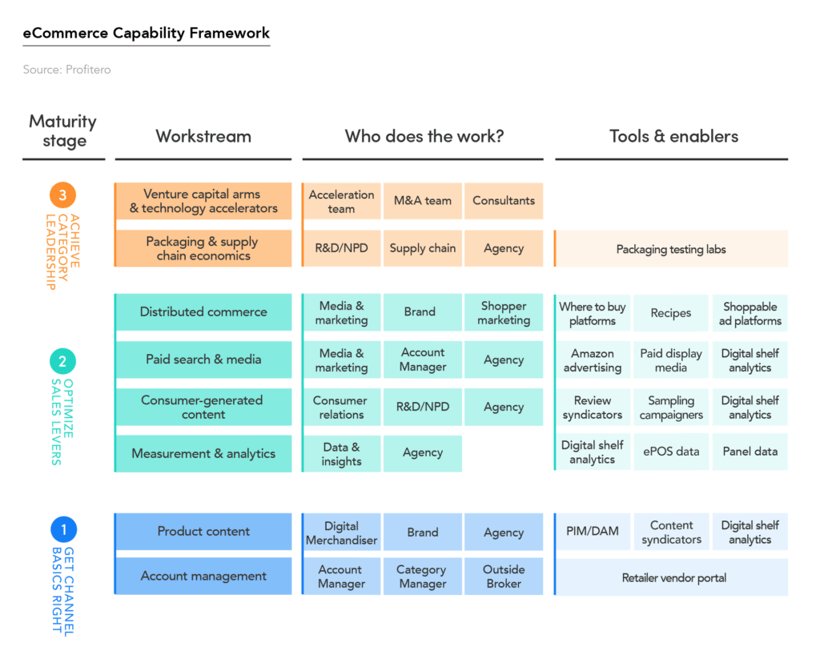

So far, 2019 is shaping up to be a blockbuster year when it comes to investing in eCommerce. According to our third annual eCommerce benchmarking survey, 41% of brands will increase eCommerce spending by as much as 10% vs. the prior year — and 35% of brands will exceed that number.

- Are you confident you’re making the right investments for 2019 and beyond?
- With so many new tools and solutions being launched everyday, do you know which ones are worth considering versus which are just hype?
- Do you have the people, power and right organizational structure in place to capitalize on these tools? Is your organization committed to using them?
First Things First: Define Your eCommerce Capability Strategy
Before you start thinking about tools and resources, you have to be clear about your eCommerce Capability Strategy. An eCommerce Capability Strategy is a vision for where you want your organization to go in eCommerce, and a plan for how to get there by combining workstreams, people to do the work and finally, resources and tools.
Over the past several months, we’ve interviewed dozens of brands — big and small — to understand how they think about their eCommerce Capability Strategy. To access the full results of this research, download our guide: Developing Your Digital Toolkit: A guide to identifying the right technology, partners and data you need to win in eCommerce.
But this framework summarizes what we learned. Let’s break it down piece by piece.

-
First, understand where you are vs. where you want to be: Is your organization just looking to get your feet wet in eCommerce by mastering the basics? Or are you on a mission to conquer the category? How you answer that question will define your entire strategy for resourcing and investing in eCommerce. Look to the three maturity stages in our framework to identify what path you’re really committed to.
-
Next, create workstreams to achieve your goals: Or to borrow a term from Clayton Christensen, understand “the job to be done.” If your goal is to master the basics of the channel, you have to start by building out your Account Management workstream and competencies. This starts with creating dedicated account management positions and roles for eCommerce, whether it’s an overall eCommerce channel lead or leads by strategic customer (e.g., Amazon, Walmart, Kroger, etc).
The other must-have capability at this early stage is Product Content. According to Trey Harshfield, Global Director, eCommerce at MolsonCoors: “Content management is one of the first areas to focus on because any conversation you have with a retailer is usually prefaced with ‘Before you start talking about anything else, go fix your content.’” With the basics in place, your organization can start to think about accelerating growth in your category by optimizing your sales levers (Availability, Traffic & Conversion). This will require the building of new workstreams and competencies.
-
Next, align resources to do the job: Every company is structured and resourced differently, but in our framework, we highlight the roles we typically find doing the work of eCommerce. One of the key strategies to consider in your resource strategy is the value of agencies and brokers. They can be a great way to accelerate progress when you lack the talent and people in house. The other consideration is talent development. Do you have a process and strategy for recruiting talent in the industry to fill new positions, and a strategy to upskill your existing talent to become “eCommerce smart”? It’s one of the reasons why we helped launched eCommerce Academy.
-
Finally, determine what tools or enablers you need: We see many companies get ahead of themselves, deploying tools before they have the work or responsible roles defined. So, be sure to first define your workstream and get the organizational commitment to align resources to do the work. Then, think of the available tools as accelerants to help your team do their jobs effectively and efficiently. In our framework, we offer some guidelines on which tools to consider for each workstream. Of course, having effective measurement and analytics tools is critical across every stage!
How does this framework line up with your company’s eCommerce Capability Strategy? Are you thinking about it differently? We want to hear from you.


























